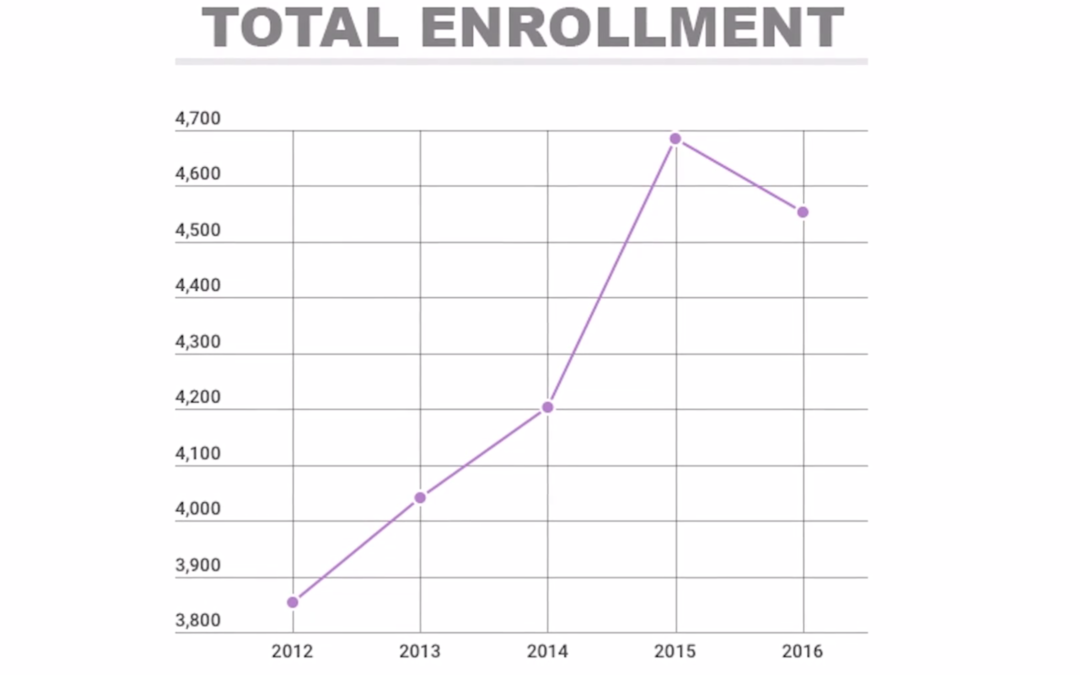With Lipscomb’s largest graduating class walking across the stage in the spring, the students coming to Lipscomb this fall have big shoes to fill.
Lipscomb reached its third highest enrollment with 4,554 students this year. Although this number is an increase from previous years, it is a decrease from last year’s 4,686 students. The university credits that decrease to graduating more students than ever.
Darrell Duncan, the Associate Vice President of Finance, said that because Lipscomb does not officially set a budget for the upcoming year until the fall when they have the official enrollment numbers, the budget is still the largest in school history, but it’s smaller than what they had expected.
“We wanted a higher enrollment than we got,” Duncan said. “Enrollment was actually down year over year, but it was in the top three of the school’s 125 year history. So on a grading scale, that’s an A+.
“What’s happened is, because of Lipscomb’s success, we have a new measure of a new standard. The budget — actually, we were hoping it would go up by about 5% year over year — that was our hope going into the budget process, but when enrollment came in, we realized we can increase the budget 3% year over year; so the misinformation is it’s not a reduction over last year — it’s just less of an increase.”
Since technically less of an increase does not indicate a decrease, Lipscomb’s enrollment is down, but its budget is not.
For other areas of campus, Dr. Scott McDowell, Dean of Student Life, said the administration is careful in their planning to ensure that the effects of instances like this do not take a toll on the student experience.
“At the end of the day, what I still am fundamentally passionate about is the experience of relationships that I think are the DNA of the Lipscomb experience,” McDowell said.
For many students, a major part of their Lipscomb experience is how its paid for. According to Duncan, this lower than expected enrollment has not affected student tuition. Although tuition topped $40,000 this year, Duncan says this year’s increase was the smallest in his tenure.
“Actually, this year was one of the lowest tuition increases that I remember, and I’ve been at Lipscomb for 18 years,” Duncan said. “It was 3.95%. Typically, some schools do double digits, and Lipscomb is continually touted as an affordable value for students.”
While Lipscomb’s tuition may have not increased by as large of a margin as other schools, its national ranking did. US News and World Report increased Lipscomb’s ranking system; now, the school is being compared to universities such as Harvard, Stanford and Yale.
“I think the days of double digit tuition increases are over,” Duncan noted. “Higher education is very competitive. The market is very competitive, and we want to be positioned as a value. We could actually increase tuition more because of our value, but we want to be sensitive to the marketplace.”
Although Duncan says the university could justifiably raise tuition because of the value in education Lipscomb provides for its students, McDowell encourages students to look at the progress the university has made overall, not just in the time they’ve been around to experience it.
“It’s a moving target, and I can look back over 24 years of Lipscomb and say, ‘Oh my goodness, we’ve come so far. The student experience is better than ever,’ but you have a limited frame of reference, and that’s how it should be,” McDowell said. “It’s the classic ‘What have you done for me lately?’ moment, if that makes sense, and not in a disparaging way, but I think we’re continually raising the bar in what the experience looks like.”
Despite the setback in expected enrollment, Lipscomb’s administration continues to predict growth in enrollment and quality of education into the spring semester.

